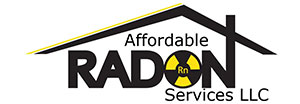Radon is a silent invader that threatens the safety of homes across the country. Many homeowners remain unaware of its presence until it’s too late. Understanding the connection between soil types and radon can provide much-needed insight into why radon levels vary from home to home and how to take precautionary steps.
What Is Radon, and Why Should Homeowners Be Concerned?
Radon is an odorless, invisible radioactive gas that forms naturally through the breakdown of uranium in the soil. Long-term radon exposure is linked to severe health risks, with lung cancer being the most alarming outcome. Radon exposure even impacts nonsmokers, who account for a surprising number of radon-induced lung cancer cases annually. Testing is the only reliable way to detect this invisible threat.
How Radon Enters Your Home
Radon originates beneath your home, silently moving through the soil. It finds its way inside through cracks in foundations, sump pits, and crawl spaces, making it a particularly challenging hazard to control. Homes built on terrains where natural uranium content in the ground is higher than average are at greater risk, underscoring the need for vigilance.
The Role of Soil Type in Radon Levels
The type of soil beneath your home influences how radon behaves. For instance, sandy soils allow radon to flow more freely, posing a higher risk of infiltration. Conversely, clay soils, while less permeable, can trap radon beneath the surface. Gravelly and loamy soils create efficient pathways for radon to travel quickly.
Why Soil Type Matters for Radon Mitigation
Understanding soil composition is essential for designing an effective radon mitigation approach. Homes built on permeable soil may require more advanced systems installed through radon mitigation specialists to ensure radon is safely redirected and vented away. The soil type also impacts the success of vapor barriers or sub-slab pressurization systems, making careful consideration and professional expertise invaluable.
How To Protect Your Home
Radon risks are manageable by taking a proactive approach. Regularly test your home, especially if you live in a high-risk area with specific soil conditions. If the test reveals elevated radon levels, contacting experts to install a professional mitigation system is the next step for long-term safety. With ongoing system inspections and maintenance, you can trust that your home is secure for years to come.
At Affordable Radon Services, we specialize in radon protection for homeowners. Whether it’s secure radon testing, mitigation, or vapor barrier installation, we’re the go-to experts for safeguarding your home. Contact us today for trusted, professional care.
Soil Types and Radon: A Manageable Connection
Radon may be invisible, but you can take control of this silent danger with the right expertise, including knowledge of the connection between soil types and radon. Trust Affordable Radon Services to deliver effective, personalized protection. Reach out now for a consultation to keep your home safe.


Recent Comments